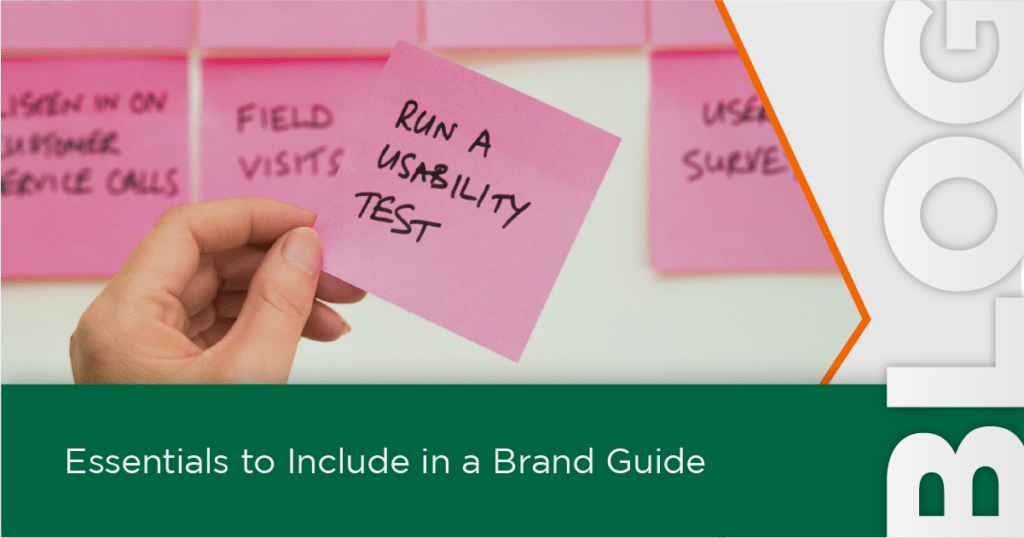If you have never heard of a brand guide, stop everything you’re doing and read this blog all the way through. When most people hear branding or brand, they think of visuals only, but it’s far more than that. It is who your business is perceived to be, the feeling your customer gets when they see your name, and it’s imperative you know what that is and do all you can to control it. Brand guides are your guiding light to ensure your branding stays cohesive and true to who you are. It allows you to convey to your staff, your investors, and your customers that you know exactly who your brand is and that you are experts in your field. It’s that important. Here are six essentials you need to include in your brand guide:
1. Mission Statement
This is usually the first thing that businesses create as part of their business plan, so you probably already have this written. Your mission statement should explain your business’s current purpose in two-to-three very poignant sentences. It should be included in your brand guide as it tells your reader what your company’s current focus and capabilities are. All the company branding should support that focus.
2. Vision Statement
Mission and vision statements are similar and often confused. A mission statement states your current goals and capabilities, whereas a vision statement establishes your goals for the future, i.e. Your company’s vision for the future. How will your company’s product or services affect the world in the future if you continue your path set out in your mission statement? Including a vision keeps your team focused on the future and sets the tone for the rest of the document. It is not a static statement and should be revisited from time-to-time.
3. Target Audience
To create your mission and vision statements, you had to consider your target audience and what you are offering. How can you create a product (solution) for someone you do not understand? Your target audience’s demographics, behaviours, pain points, and psychographics should be included in your brand guide. Simply put: How old is your target market? What do you know about that age group? What do they do for a living? How do they make their purchase decisions? What problems do they have with their current solution and how can you help them? How will you reach them? Are they on social media or do they read journal articles? It helps to find a few ideal customers who you already have or to imagine an ideal customer. A general idea of your target market is good, but a few specific personas will really give your staff insights into who they’re talking to and how best to help them.
4. Personality
Your brand is its own entity. It has its own personality, and everyone needs to be clear about what that is. As we said in the beginning, your brand is a perception by your customers. It’s something that you cannot fully control, but you must establish ground rules to put what you want to be known for out there. You can do this by simply defining your brand personality in descriptive words. Are you a company who wants to be known for its high-end suits? Perhaps your adjectives could be elegant, sophisticated, simple yet elevated, respectful, polite, calm. Are you a childcare company who wants to be known for high standards of care? Perhaps your adjectives could be educated, fun, active, healthy, child led learning, professional, kind. These adjectives don’t mean your staff can’t step out of this box, but they give them an idea of what you expect them to convey to the client.
5. Tone of Voice
Tone of voice goes along with personality. Now that we know what our personality is, how does our company talk? If you are elegant and sophisticated, would you share a silly meme? Is there room for that in your branding? If there are certain terms or taglines that you want to be known for then you should include them here. For example, you may not want to say no to a client and instead you want your staff to always say, “May I offer you an alternative.” If your team members should always be known as “crew” then that should be listed here. This way, your staff will know what words they can use to effectively represent your brand.
6. Look and Feel
This is also known as design, but it’s more than that. Design is a tool to give your customer the feeling that you want your company to be known. This section should include logos, logo placement, brand colour palette, fonts (typography), and imagery. This is the most visible part of your branding and its what people will see first and remember most. Therefore, though it is incredibly important, it is number six for order of creation. Your design must represent all of items one through five and must not be done before they are established so you can be sure you understand the messaging you are sending out into the world before you create it visually.
- Logo placement should show examples of how your logo should be used and not used. Be as detailed as you can. Where can your logo be on a poster or on a social media post?
- Fonts (typography) should give examples of different fonts across platforms and where they should be used in documentation and imagery to keep a cohesive look.
- Colour palette: These should list HEX/ RGB Codes for digital media and CMYK for print.
- Imagery: Acceptable images should be described and shown as examples. Also define what is not acceptable. Establish the goals and how you want these images to make your customers feel.
Post Press
Like all things in business, stay agile and revisit what is working for your business. Don’t be afraid to ask your employees (your primary customers) what their first impressions are and involve them in your evaluations. Your brand guide will help each of your stakeholders understand who you want your brand to be and how to ensure it is known for those things. Involving your employees will allow you to see if your plan is working or needs a refresh.
A brand guide eliminates guess work when you need something sent to a contractor or to your friendly neighbourhood printer. Your printer will have far less questions and it will expediate the process as everyone will have a solid understanding of what you want to say with your branding. We love brand guides at Minuteman Press Calgary Shepard. We also love you too, so we want you to succeed. We are experts in design and branding and we are happy to help. Contact us for a consultation today because We Design. We Print. You Profit.

